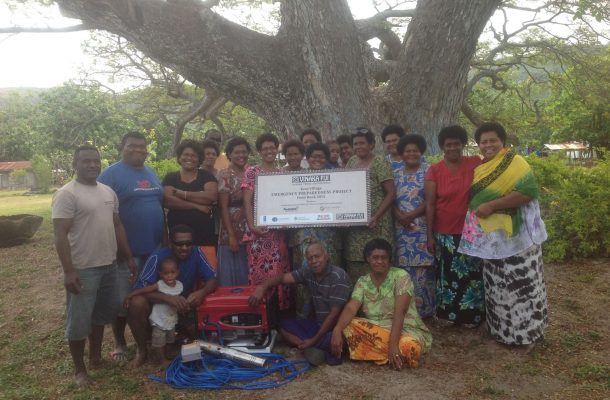Building disaster resilience in the Pacific: The Yasawa case study

To be food-secure is to have food readily available before, during and after disaster periods. For communities living in cyclone paths, such as the Yasawa community, this is often difficult to achieve because people are reliant upon government handouts after a cyclone and are reluctant to plant vegetables in fear of the next cyclone.
With this in mind, a local charity, Vinaka Fiji, piloted a food bank project in two villages of Kese and Soso on the island of Naviti. This was made possible due to the assistance of the Pacific Risk Resilience Program of the UN Development Programme and Live & Learn Environmental Education.
Naviti is a volcanic island located on a cyclone path, making is susceptible to natural disasters from November to April. In 2012, Naviti was severely affected by Cyclone Evan and two years later by an extended dry spell; in 2016, it was hit by category 5 Cyclone Winston.
Kese and Soso are two of the seven villages of Naviti district. Their main sources of income are tourism and fishing, and many villagers also plant cash crops, such as Chinese cabbage, cucumber, eggplant, lettuce, ng bean and tomatoes, which are used for family consumption.
The food bank project in Yasawa began in 2015. Its two main objectives were to plant disaster-resilient crops and have nutritious food stored for the communities before and after disaster periods. Stakeholders involved in the implementation process ranged from private businesses, local villagers and farmers’ committees to church groups, local and international donors, and the government.
The main problems identified in several cyclone-path communities were the over-reliance on government support for food after disaster periods and a lack of availability of nutritious food after disasters.
The project married traditional food-storage knowledge with current technology which helped build the storage facilities. It involved community consultations, committee meetings, an operational plan, the development of farming plots and storage houses, and the provision of banking facilities. Through the food bank project, the communities of Kese and Soso planted 2000 suckers of dalo ni tana and 1,000 kumala plants, both of which are traditional resilient crops.
Storage houses were constructed by the village committees, ensuring the safe storage of harvested crops; these supplemented the diets of 141 households. Communal income was collected through the sale of crops, while Vinaka Fiji undertook financial literacy training in the villages to build capacity.
The food bank project showed its strengths in the wake of Cyclone Winston. Farmers from Kese and Soso were able to sustain their communities with crops they had stored earlier in the year. Due to the project’s success, there was an indication of an extension to the food bank project, with the government supporting a plan to build a collection centre and a vegetable cooler for the two villages.
The project did encounter various challenges, such as delays in the implementation of some activities involved, limited availability of resilient crops, and challenges with local mentalities. Ultimately, the team persevered though these difficulties, and the success showed that food bank projects are the way forward in helping Pacific communities affected by natural disasters to build up their food security.
This is an edited version of an article published in the 2018 CTA Report ‘Resilience and Productivity in the Pacific’, Experience Capitalization Series 7.
Lanieta Tokalauvere has extensive practical experience in natural resources development projects. She gained a Master of Arts degree in Geography from the University of the South Pacific in Fiji and now tutors students at the same institution.











